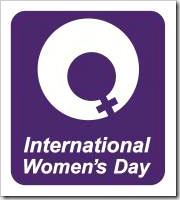 Today, 8 March, is International Women’s Day, and all of March it is Womens' History Month.
Today, 8 March, is International Women’s Day, and all of March it is Womens' History Month.It seems to me that when people think of inventors, they mostly think of men. And when they think of inventions, they mostly think of inventions made by men. There are some obvious real-life examples, like the Wright brothers and the airplane, Alexander Graham Bell and the telephone, Guglielmo Marconi – or, alternatively, the equally male Nikola Tesla – and radio, or Thomas Edison and the light bulb (amongst many others).
Of course, these men made genuinely significant contributions to science, technology and industry. But they are often the beneficiaries of ‘great man’ narratives, in which they are imagined as lone geniuses striding across the technological landscape of history, rather than fairly ingenious people building on the work of many others before and beside them. This notion is compounded in fictional books, films and TV series, where the ‘visionary’ (or ‘mad’, as the case may be) scientist is almost always portrayed as male.
Women inventors thus suffer twice. First, their achievements tend to be downplayed in the historical record, and they are rarely accorded the same credit that a ‘great man’ would receive for the same contribution. Women’s stories are far more likely to focus on collaboration, cooperation and teamwork, due to a historical and cultural bias in the way we view agency of women versus men. Second, these same biases are played out in fictional accounts of scientific and technological innovation. H G Wells did not write about The Invisible Woman, we have Ironman, not Ironwoman, and a version of Back to the Future featuring a Dr Emma Brown is impossible to imagine!
So, in celebration of International Women’s Day, here are a few of my favourite inventions made by women, and their inventors. This list is, of course, not intended to be exhaustive or anything other than personal. I would love it if you would add your own picks in the comments!
Computer Science – Ada Lovelace
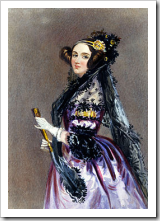 There are two things I particularly like about Ada Lovelace: unusually, she is actually better known for her own achievements in her short (37 year) life than for being the daughter of a very famous man (Lord Byron); and she has been recognised in recent times by having the Ada programming language named in her honour.
There are two things I particularly like about Ada Lovelace: unusually, she is actually better known for her own achievements in her short (37 year) life than for being the daughter of a very famous man (Lord Byron); and she has been recognised in recent times by having the Ada programming language named in her honour.The story of Ada Lovelace (born Augusta Ada Byron, later to become Augusta Ada King, Countess of Lovelace) of course involves a man – Charles Babbage, inventor of the ‘Analytical Engine’, a mechanical calculating device now widely regarded as the first design for what we would understand as a general purpose computer.
While Babbage originated the designs for the Analytical Engine, Lovelace understood its principles at least as well as he did, and she was able to describe its potential with greater clarity and precision. With her background in mathematics and music, she prepared a set of Notes, along with a translation of an article on the Analytical Engine written in French by Italian mathematician, engineer and future Prime Minister Louis Menebrea (yes, another man).
It is Ada’s Notes that set out the true promise of the Analytical Engine, as ‘the material expression of any indefinite function of any degree of generality and complexity’. She described an algorithm for using the Engine to compute Bernoulli numbers, which was probably the first ever computer program. And she raised key questions about the relationships between people and technology.
Windscreen Wipers – Mary Anderson
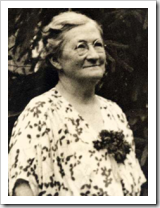 While it was men who, for the most part, did the driving around in early automobiles, it took a woman pedestrian to make it possible for them to avoid having to get out periodically to wipe accumulated rain or snow from the windscreen (or windshield, for my American readers).
While it was men who, for the most part, did the driving around in early automobiles, it took a woman pedestrian to make it possible for them to avoid having to get out periodically to wipe accumulated rain or snow from the windscreen (or windshield, for my American readers).The story goes that, on a visit to New York at around the turn of the 20th century, Mary Anderson was riding a streetcar in a rainstorm when she noticed that the driver was forced to wind down the window, and stick his head out, so as to be able to see his way after the windscreen had become obscured by water.
As described in her US patent no. 743,801, her design for a ‘window-cleaning device’ already has many of the key characteristics that we would recognise in the windscreen wipers of today, it’s objects being:
…first, to provide a device operating on the outside of the glass to remove snow, rain, or sleet from the center vestibule-window of modern electric-motor cars and operable from the inside of the vestibule, at the same time providing means whereby the window-cleaning devices are rendered easily removable when not required, thus leaving nothing to mar the usual appearance of the car during fair weather; second, to provide means for maintaining a uniform pressure upon the glass throughout the entire area swept by my improved window-cleaning device; third, to so construct my improved window-cleaning device as to make it up of two or more independent parts, so that an obstruction to one will not affect the other or others.
It seems funny now to imagine all the ‘stupid’ men, driving around with their heads out of the window in the rain, or stopping every 100 metres to wipe their windscreens manually. But before Mary Anderson came up with the idea for windscreen wipers, this was just the commonly accepted, and perfectly normal, practice!
Liquid Paper – Bette Nesmith Graham
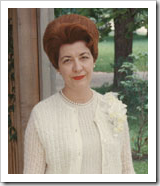 Annoyingly, perhaps the most well-known factoid about Liquid Paper is that it was invented by the mother of Michael Nesmith from The Monkees.
Annoyingly, perhaps the most well-known factoid about Liquid Paper is that it was invented by the mother of Michael Nesmith from The Monkees.However, since The Monkees did not form until 1965, and Bette Nesmith Graham sold her first batch of ‘Mistake Out’ in 1956, it would be fairer to express the factoid in reverse: hey, did you know that the son of Bette Nesmith Graham, the woman who invented Liquid Paper, was actually one of The Monkees?!
Along with her fellow typists, Graham found the invention of the electric typewriter to be a mixed blessing. On the one hand, it made typing much easier and faster, but on the other it was no longer possible to wipe out mistakes with a pencil eraser. An error towards the end of a page meant retyping the whole page!
The story goes… (Have you noticed that men seem more likely to pluck inventions out of thin air, while women always seem to have a motivating story?)
Anyway, the story goes that Graham got her inspiration when she saw some painters (men, no doubt) decorating the windows of a bank for the holidays, and noticed that when they made a mistake, they simply painted over it with another layer.
The rest, as they say, is history… with quite a bit of hard work thrown in, of course!
Although some sources claim that Graham applied for a patent in 1958, I have been unable to find any corresponding issued patent. However, this 1984 patent from 3M Corporation indicates that the original Liquid Paper formula was maintained as a trade secret.
Frequency-Hopping Spread Spectrum – Hedwig Eva Maria Kiesler
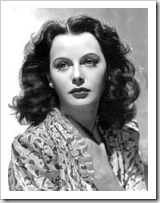 Who is Hedwig Eva Maria Kiesler? I hear you cry. She is better known to most people as Hedy Lamarr, star of classic films such as Samson and Delilah (1949), the notorious Ecstasy (1933) and Algiers (1938).
Who is Hedwig Eva Maria Kiesler? I hear you cry. She is better known to most people as Hedy Lamarr, star of classic films such as Samson and Delilah (1949), the notorious Ecstasy (1933) and Algiers (1938).However, she was also co-inventor, with composer George Antheil, of what is now recognisable as an early ‘frequency-hopping spread spectrum’ (FHSS) communications system, described in US patent no. 2,292,387, titled ‘secret communication system’.
Of course, there is a story! Antheil was a neighbour of Lamarr’s, who had experimented with the automated control of musical instruments, including compositions for multiple, simultaneous player pianos. Supposedly, Antheil and Lamarr had been discussing radio-controlled torpedoes, used during the Second World War (as you do), and the problem of jamming, i.e. the ability of the enemy to block the controlling transmissions by broadcasting an interfering signal at the same frequency.
What they realised was that jamming could only work if the interfering signal was broadcast on the correct frequency and that, if the frequency used for controlling the torpedoes were to ‘hop’ around, in an unpredictable manner, it would be impossible to jam. By the same token, if somebody wanted to eavesdrop on a radio communication, they would need to know which frequency it is being transmitted on. Given a little time, it is possible to search for transmission frequencies, but this is of no assistance if they change faster than they can be found.
Lamarr and Antheil struck upon the idea of using player piano technology, which uses a paper roll with punched holes to control the operation of 88 piano keys (audio frequencies) to control the frequency settings of a radio transmitter and receiver. By using the same roll at both ends, the frequencies track each other, and the communication gets through. Without a matching roll, however, there is no way to follow the signal as it hops around the frequency spectrum.
Supposedly the US Navy did not initially think much of the idea, and it was not adopted immediately. However, after the patent had expired, the technology was reportedly used in 1962 for secret communications between naval ships during the Cuban Missile Crisis.
In 1997, Lamarr and Anthiel received the Electronic Frontier Foundation (EFF) Pioneer Award. Various sources also report that, again in 1997, Lamarr became the first female recipient of the BULBIE™ Gnass Spirit of Achievement Award – supposedly the “Academy Awards of Inventing”, although my searching suggests that the award is best known for having been won by Hedy Lamarr in 1997. Which is, in itself, an achievement!
Conclusion
So there you have just a handful of my top picks of women inventors and their inventions.Please add you nominations in the comments below. If I get enough, maybe we can even run a vote.
In the meantime, happy International Women’s Day!
Images: Ada Lovelace and Hedy Lamarr, Wikimedia Commons; Mary Anderson, USPTO; Bette Nesbit Graham, liquidpaper.com.
Tags: Inventions, Inventors, Patents and society


0 comments:
Post a Comment